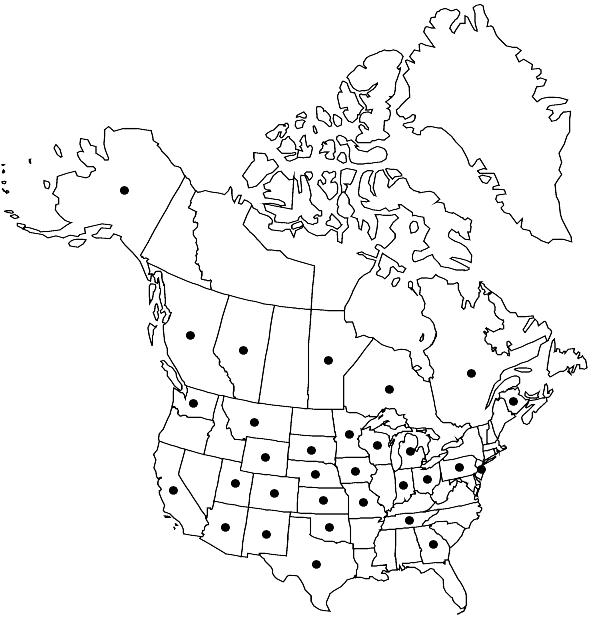Tortula obtusifolia
Fl. Gén. Belgique 2: 48. 1853,.
Leaves ovate to ligulate, apex rounded or occasionally broadly acute, apiculate, margins strongly recurved or revolute in distal 4/5 of leaf, sometimes bordered distally with (2–)4 rows of thicker-walled cells, or occasionally border of rhomboidal, smooth cells commonly hidden in recurvature; costa ending in apiculus or occasionally percurrent or subpercurrent, lacking an adaxial pad of swollen cells or this poorly developed, distally not broadening, to 5–6 cells across the convex adaxial surface; distal laminal cells hexagonal or subquadrate, 10–13 µm wide, 1:1, strongly papillose with 2-fid or multiplex papillae. Sexual condition autoicous, but plants often bearing only antheridia or archegonia. Sporophytes exerted. Seta 0.5–0.8 cm. Capsule stegocarpic, cylindric or ovate, erect and nearly straight, urn 1–2.5 mm; peristome rudimentary or to 500 µm, teeth 16, irregular, divided to base and filamentous when long, straight or twisted, basal membrane very low or absent; operculum 0.7–1 mm. Spores 9–11(–15) µm, spheric, finely papillose or essentially smooth.
Phenology: Capsules mature spring–fall.
Habitat: Soil, rock, limestone, calcareous sandstone, stone walls, crevices, ledges
Elevation: low to high elevations (0-3300 m)
Distribution

Alta., B.C., Man., N.B., Ont., Que., Alaska, Ariz., Calif., Colo., Ga., Ind., Iowa, Kans., Mich., Minn., Mo., Mont., Nebr., N.J., N.Mex., Ohio, Okla., Pa., S.Dak., Tenn., Tex., Utah, Wash., Wis., Wyo., Europe, Asia, Africa.
Discussion
The variation in peristome development of Tortula obtusifolia is considerable, and matches intraspecifically the variation between the peristomes of species previously recognized in the segregate genus Desmatodon and in Tortula in the strict sense. This species may be confused with T. atrovirens but the latter has a massive pad of bulging cells on the costa.
Selected References
None.